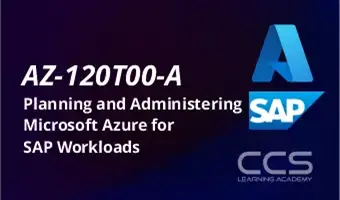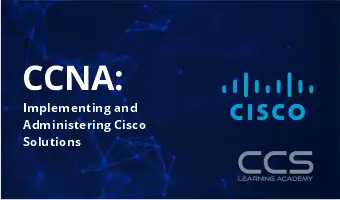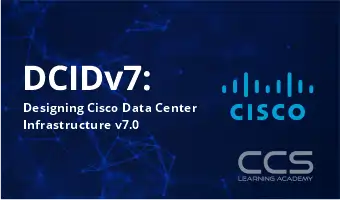Filter by Topic
Filter by Vendor
55293-A: SharePoint End User 2019
Course Description: This SharePoint 2019 End User class is for …
What you'll learn
Learn to navigate a SharePoint 2019 Team Site.
Learn to create SharePoint lists.
Learn to customize SharePoint lists.
Learn to create SharePoint libraries.
Learn to manage library document versions.
Learn to create SharePoint lists and library views.
Learn to create sub sites using various SharePoint templates
Learn to create and edit Web page content.
Learn to create InfoPath Forms and Form libraries.
Learn to create Site columns and content types.
Learn to integrate Office applications with SharePoint 2019.
Learn to manage basic permissions of SharePoint 2019 resources.
Understand the versions of SharePoint.
Understand SharePoint site hierarchy.
Understand Team Site layout.
Understand navigation within a team site.
Understand List Templates.
Work with default lists in a Team Site.
Create a new list from a List Template.
Create a custom list.
Add columns to a list.
Control and validate input into list fields.
Create new libraries using library templates
Add columns to a library
Check out documents for editing.
Delete and restore documents from document libraries.
Enable versioning on a library.
Revert a library document to an earlier version.
Use default views built into lists and libraries.
Create shared views.
Configure views.
Set the default view for a list or library.
Understand what Site Templates are.
Understand the different types of Site Templates that come “out of the box” with different versions.
Create a new site using Site Templates.
Create a Project Site.
Create a Team site.
Create a Community Site
Create a Blog site.
Manage the sites listed in the Top Link Bar.
Understand what site pages are.
Understand what wiki pages are.
Understand what Web Parts are.
Add content to the Site Home page.
Create a wiki page library
Add Web Parts.
Manage Web Parts.
Understand what a Form Library is.
Create a Form Library.
Use InfoPath Designer to design a basic form template.
Publish an InfoPath Designer form template to a Form Library
Designate for templates fields as library columns.
Create instances of documents in a Form Library.
Understand Site Columns.
Understand Content Types.
Create Site Columns.
Create Content Types.
Create a document template for a Content Type.
Assign a Content Type to a list or library.
Create new items based on a custom Content Type.
Create a list from an Excel Spreadsheet.
Create an alert in Outlook.
Understand SharePoint groups.
Create SharePoint groups.
Assign permission in SharePoint.
View permission levels.
Manage permission inheritance at the site level.
Manage permission inheritance at the list or library level.
Edit a personal profile.
DP-100T01-A: Designing and Implementing a Data Science Solution on Azure
360° Microsoft Azure data science certification Course The Microsoft Azure …
AZ-500T00-A: Microsoft Azure Security Technologies
Course Description: This course provides IT Security Professionals with the …
What you'll learn
Implement enterprise governance strategies including role-based access control, Azure policies, and resource locks.
Implement an Azure AD infrastructure including users, groups, and multi-factor authentication.
Implement Azure AD Identity Protection including risk policies, conditional access, and access reviews.
Implement Azure AD Privileged Identity Management including Azure AD roles and Azure resources.
Implement Azure AD Connect including authentication methods and on-premises directory synchronization.
Implement perimeter security strategies including Azure Firewall.
Implement network security strategies including Network Security Groups and Application Security Groups.
Implement host security strategies including endpoint protection, remote access management, update management, and disk encryption.
Implement container security strategies including Azure Container Instances, Azure Container Registry, and Azure Kubernetes.
Implement Azure Key Vault including certificates, keys, and secretes.
Implement application security strategies including app registration, managed identities, and service endpoints.
Implement storage security strategies including shared access signatures, blob retention policies, and Azure Files authentication.
Implement database security strategies including authentication, data classification, dynamic data masking, and always encrypted.
Implement Azure Monitor including connected sources, log analytics, and alerts.
Implement Azure Security Center including policies, recommendations, and just in time virtual machine access.
Implement Azure Sentinel including workbooks, incidents, and playbooks.
AZ-120T00-A: Planning and Administering Microsoft Azure for SAP Workloads
Course Description: This course teaches IT Professionals experienced in SAP …
CCNA: Implementing and Administering Cisco Solutions
Course Description: Implementing and Administering Cisco Solutions (CCNA) is a …
What you'll learn
Identify the components of a computer network and describe their basic characteristics
Understand the model of host-to-host communication
Describe the features and functions of the Cisco Internetwork Operating System (IOS®) software
Describe LANs and the role of switches within LANs
Describe Ethernet as the network access layer of TCP/IP and describe the operation of switches
Install a switch and perform the initial configuration
Describe the TCP/IP Internet layer, IPv4, its addressing scheme, and subnetting
Describe the TCP/IP Transport layer and Application layer
Explore functions of routing
Implement basic configuration on a Cisco router
Explain host-to-host communications across switches and routers
Identify and resolve common switched network issues and common problems associated with IPv4 addressing
Describe IPv6 main features and addresses, and configure and verify basic IPv6 connectivity
Describe the operation, benefits, and limitations of static routing
Describe, implement, and verify Virtual Local Area Networks (VLANs) and trunks
Describe the application and configuration of inter-VLAN routing
Explain the basics of dynamic routing protocols and describe components and terms of Open Shortest Path First (OSPF)
Explain how Spanning Tree Protocol (STP) and Rapid Spanning Tree Protocol (RSTP) work
Configure link aggregation using EtherChannel
Describe the purpose of Layer 3 redundancy protocols
Describe basic WAN and VPN concepts
Describe the operation of Access Control Lists (ACLs) and their applications in the network
Configure Internet access using Dynamic Host Configuration Protocol (DHCP) clients and explain and configure Network Address Translation (NAT) on Cisco routers
Describe basic Quality of Service (QoS) concepts
Describe the concepts of wireless networks, which types of wireless networks can be built, and how to use Wireless LAN Controllers (WLCs)
Describe network and device architectures and introduce virtualization
Introduce the concept of network programmability and Software-Defined Networking (SDN) and describe smart network management solutions such as Cisco DNA Center™, Software-Defined Access (SD-Access), and Software-Defined Wide Area Network (SD-WAN)
Configure basic IOS system monitoring tools
Describe the management of Cisco devices
Describe the current security threat landscape
Describe threat defense technologies
Implement a basic security configuration of the device management plane
Implement basic steps to harden network devices
Veeam Availability Suite v11: Configuration and Management
Course Description: The Veeam® Availability Suite™ v11: Configuration and Management …
What you'll learn
Describe Veeam Availability Suite components usage scenarios and relevance to your environment.
Effectively manage data availability in on-site, off-site, cloud and hybrid environments.
Ensure both Recovery Time Objectives (RTOs) and Recovery Point Objectives (RPOs) are met.
Configure Veeam Availability Suite to ensure data is protected effectively.
Adapt with an organization’s evolving technical and business data protection needs.
Ensure recovery is possible, effective, efficient, secure and compliant with business requirements.
Provide visibility of the business data assets, reports and dashboards to monitor performance and risks.
DCIDv7: Designing Cisco Data Center Infrastructure v7.0
Course Description: The Designing Cisco Data Center Infrastructure (DCID) v7.0 …
What you'll learn
Describe the Layer 2 and Layer 3 forwarding options and protocols used in a data center
Describe the rack design options, traffic patterns, and data center switching layer access, aggregation, and core
Describe the Cisco Overlay Transport Virtualization (OTV) technology that is used to interconnect data centers
Describe Locator/ID separation protocol
Design a solution that uses Virtual Extensible LAN (VXLAN) for traffic forwarding
Describe hardware redundancy options; how to virtualize the network, compute, and storage functions; and virtual networking in the data center
Describe solutions that use fabric extenders and compare Cisco Adapter Fabric Extender (FEX) with single root input/output virtualization (SR-IOV)
Describe security threats and solutions in the data center
Describe advanced data center security technologies and best practices
Describe device management and orchestration in the data center
Describe the storage options for compute function and different Redundant Array of Independent Disks (RAID) levels from a high-availability and performance perspective
Describe Fibre Channel concepts, topologies, architecture, and industry terms
Describe Fibre Channel over Ethernet (FCoE)
Describe security options in the storage network
Describe management and automation options for storage networking infrastructure
Describe Cisco UCS servers and use cases for various Cisco UCS platforms
Explain the connectivity options for fabric interconnects for southbound and northbound connections
Describe the hyper converged solution and integrated systems
Describe the system wide parameters for setting up a Cisco UCS domain
Describe role-based access control (RBAC) and integration with directory servers to control access rights on Cisco UCS Manager
Describe the pools that may be used in service profiles or service profile templates on Cisco UCS Manager
Describe the different policies in the service profile
Describe the Ethernet and Fibre Channel interface policies and additional network technologies
Describe the advantages of templates and the difference between initial and updated templates
Describe data center automation tools
VMware vSphere: Troubleshooting 7.0
Course Description This hands-on training course provides you with the …
What you'll learn
Introduce troubleshooting principles and procedures
Explain the purpose of key vSphere log files
Use command-line interfaces, log files, and the vSphere Client to diagnose and resolve problems in the vSphere environment
Identify networking problems based on reported symptoms, validate, and troubleshoot the reported problem, identify the root cause, and implement the appropriate resolution
Analyze storage failure scenarios using a logical troubleshooting methodology, identify the root cause, and apply the appropriate resolution to resolve the problem
Troubleshoot vSphere cluster failure scenarios and analyze possible causes
Diagnose common VMware vSphere® High Availability problems and provide solutions
Identify and validate VMware ESXi™ host and VMware vCenter Server® problems, analyze failure scenarios, and select the correct resolution
Troubleshoot virtual machine problems, including migration problems, snapshot problems, and connection problems
Troubleshoot performance problems with vSphere components










